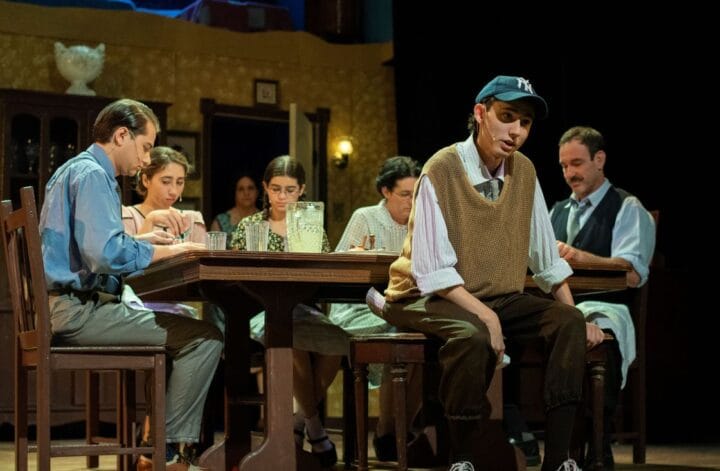Even if you’re a seasoned theatergoer, you’ve probably never experienced anything quite like the Art Heist Experience.
One of the creative COVID-safe productions conceived to keep theatre alive while we await the return of safe indoor gatherings, Art Heist premiered last year at the Vancouver Fringe Festival and has since been mounted across the country. The show was recently produced in the area with runs at the Arsht and Broward Centers. Still, it’s a primarily new cast in the West Palm Beach iteration, playing at the Kravis Center on Wednesdays through Sundays from now until May 16th. Or, to speak more accurately, outside the Kravis Center; besides a short pre-show introduction in the lobby of its Rinker Playhouse, Art Heist takes place entirely outdoors. Small groups of masked, socially distanced audience members are led by three actor guides in character as FBI agents (Melissa Almaguer, Jessica Angleskhan, and Randall Swinton) to meet the play’s other four characters, which are key suspects in the titular heist.
Still of Art Heist at the Kravis Center
That heist was the notorious real-world crime at the Isobella Gardner Museum in 1990, one of the most baffling such incidents of all time. Two men disguised as police officers infiltrated the museum, tied up the guards, and walked away with a whopping thirteen pieces of stolen art. No one was ever convicted for the crime, and the works, which include prestigious paintings by the likes of Rembrandt, Vermeer, and Degas, have never been recovered.
Thus, in Art Heist’s conceit, the audiences become detectives brought in to train their fresh eyes on the cold case. Via QR code, we are provided with a virtual dossier containing some essential information about each suspect, along with a few audio, visual, or text “clues” hinting at their potential involvement in the crime. If you arrive at the suggested 15 minutes before your performance time, you should be able to review this pre-show, but you can also revisit them throughout the night as you stroll between subjects.
After being introduced to each subject by our guide, the audience members then get the chance to question the potential perpetrators. First up on the chopping block was wayward security guard Rick Abath, played by a wide-eyed Amy Eileen Mahon. That isn’t a typo—because Art Heist was open to nontraditional casting. Its roster of seven white male characters is played by an ensemble that includes four women and one man of color. This worked particularly well given the nature of the evening; what might have been distracting in a conventional production, one that asked us to get lost in a story, was no great hindrance when our minds were instead occupied trying to solve a case. All the performers appeared reasonably well-versed in their characters’ backgrounds and never seemed to miss a beat even when improvising answers to some of the more out there inquiries. Mahon’s nervous energy suited her role as a doofus musician who may just have gotten in way over his head while the other three characters appeared more confident in accord with their documented criminal pasts.
Still of Art Heist at the Kravis Center


